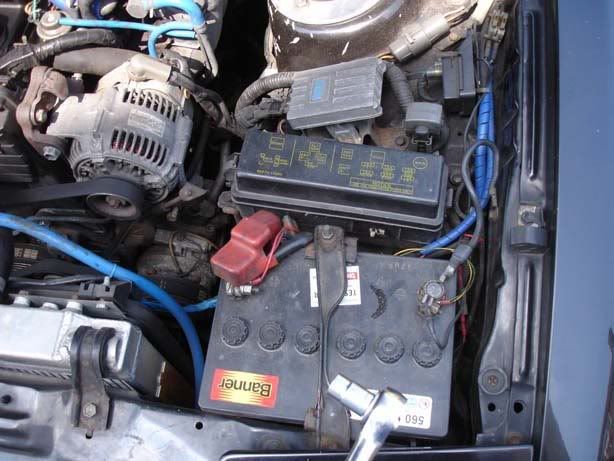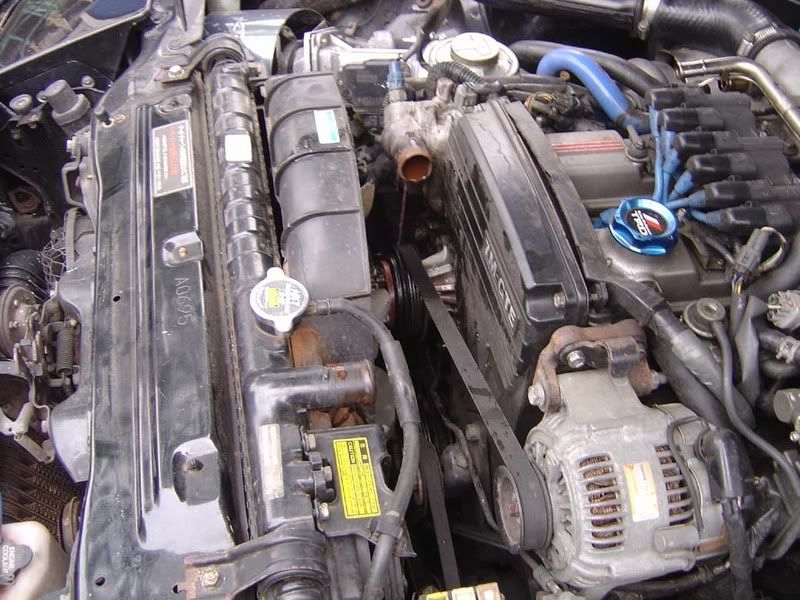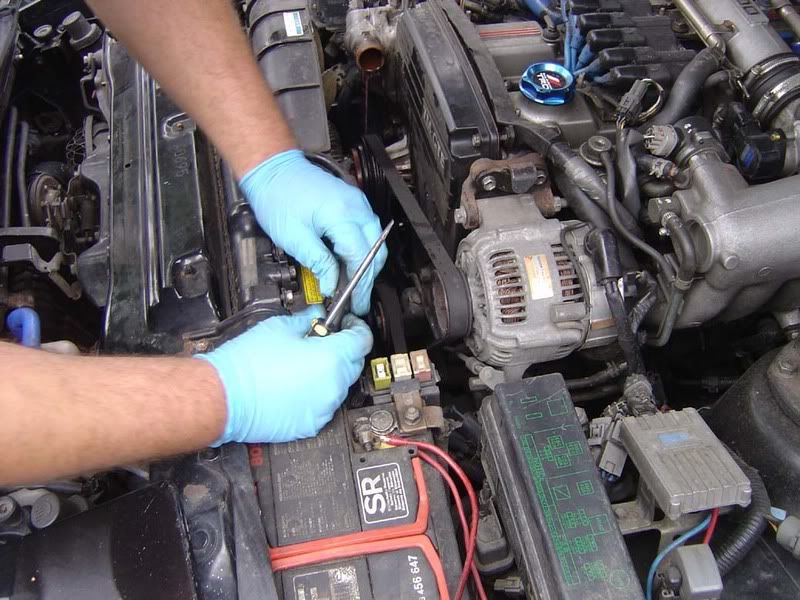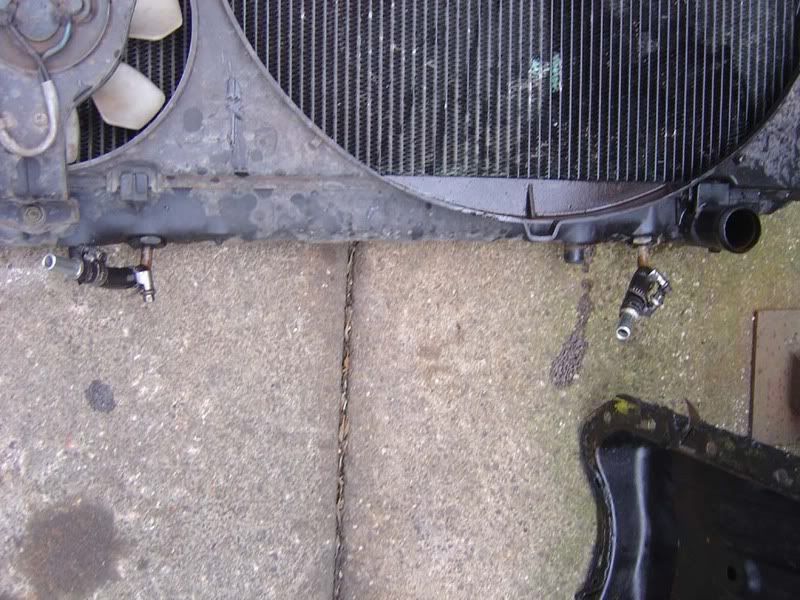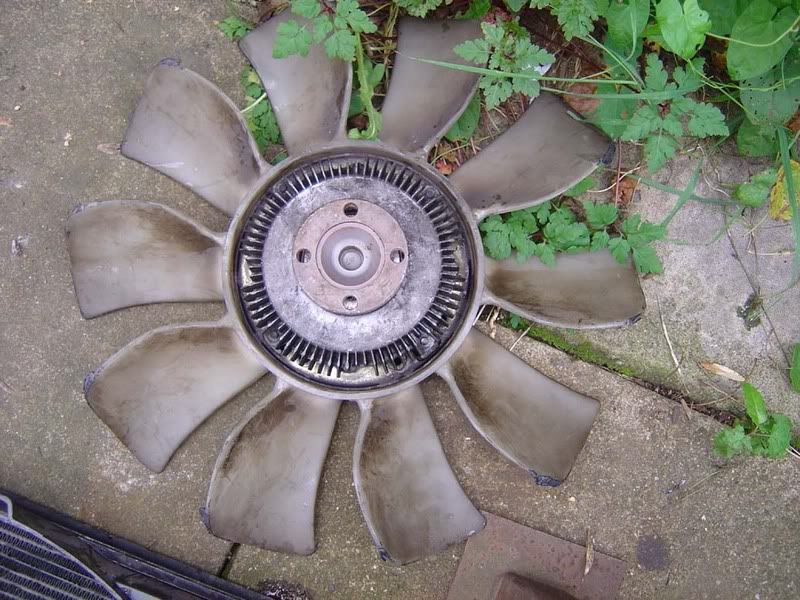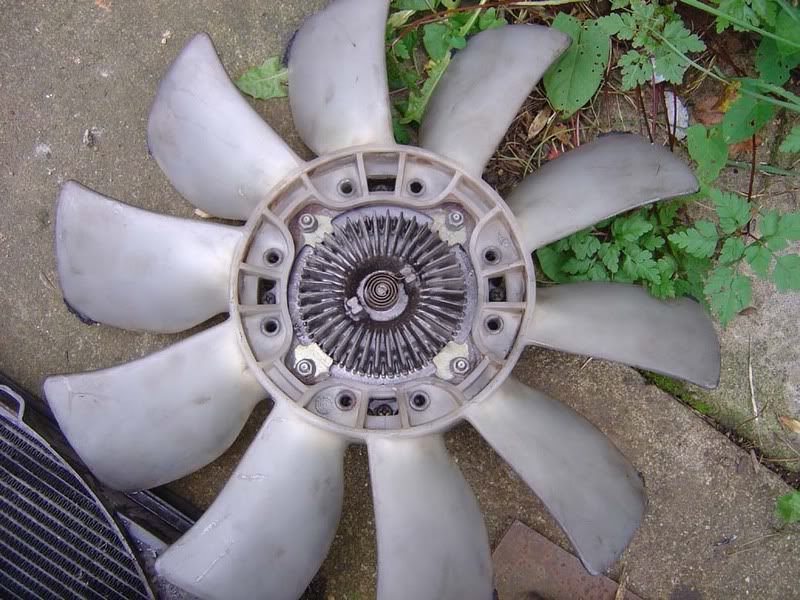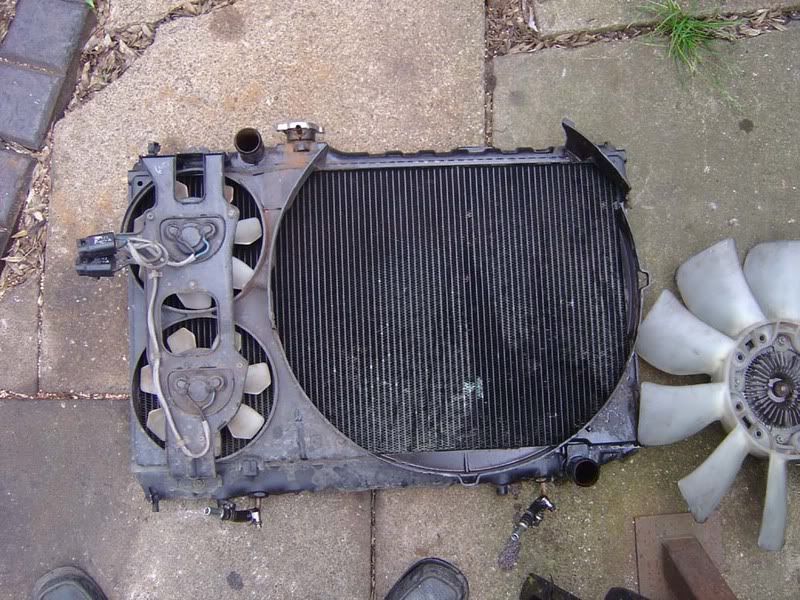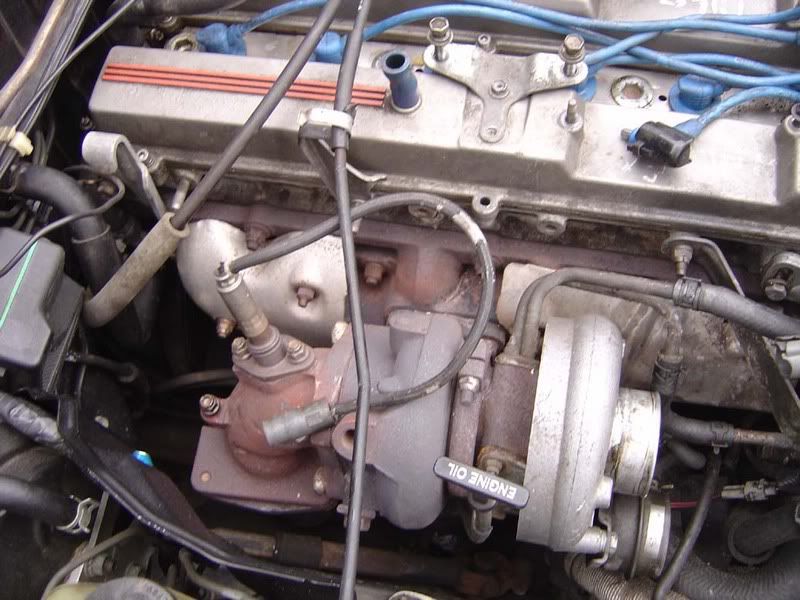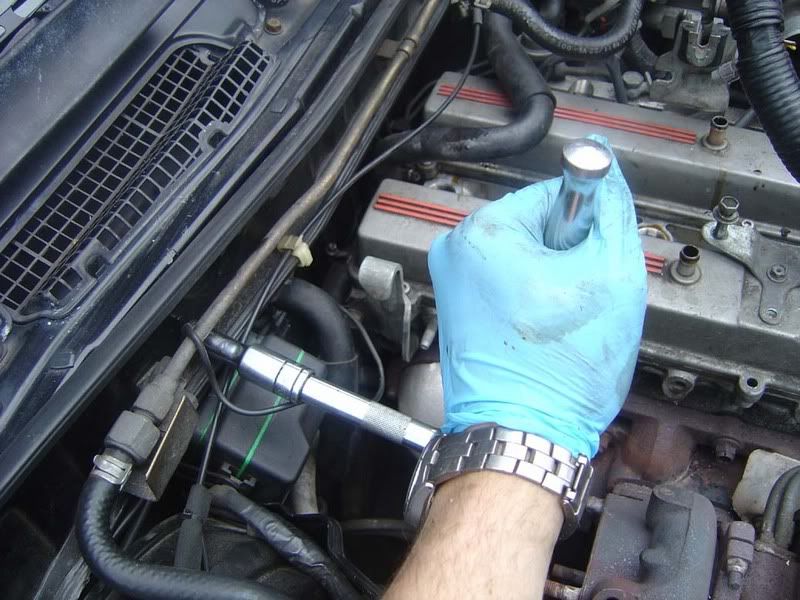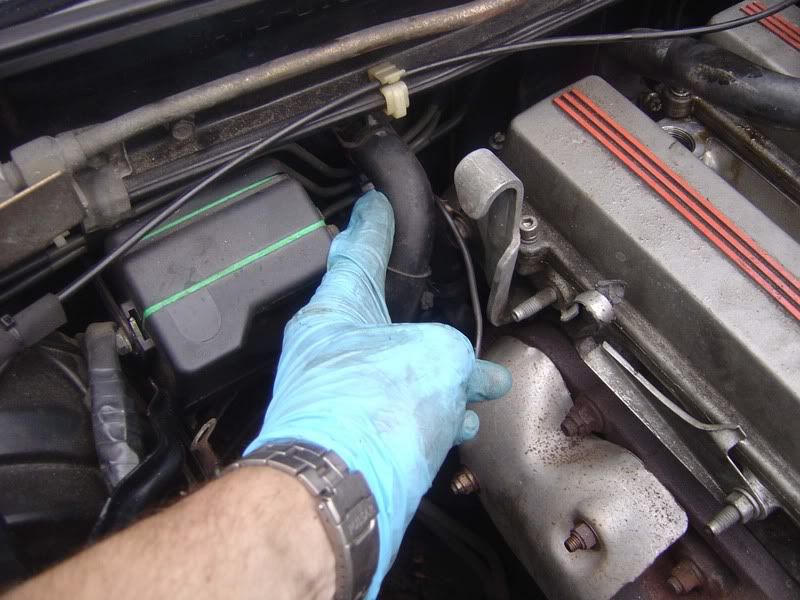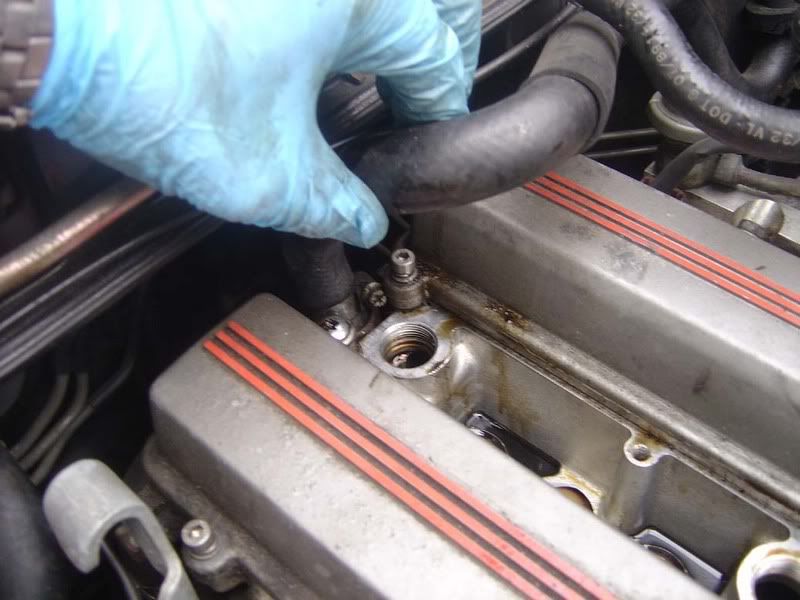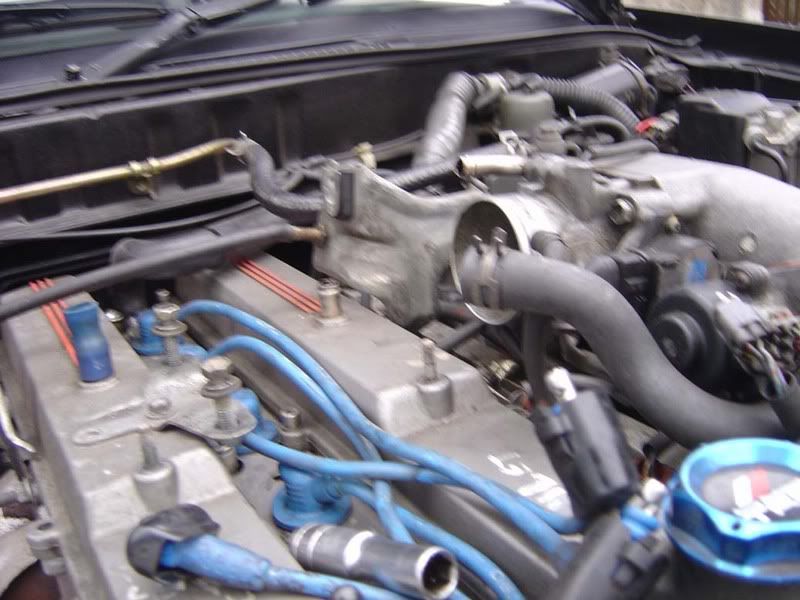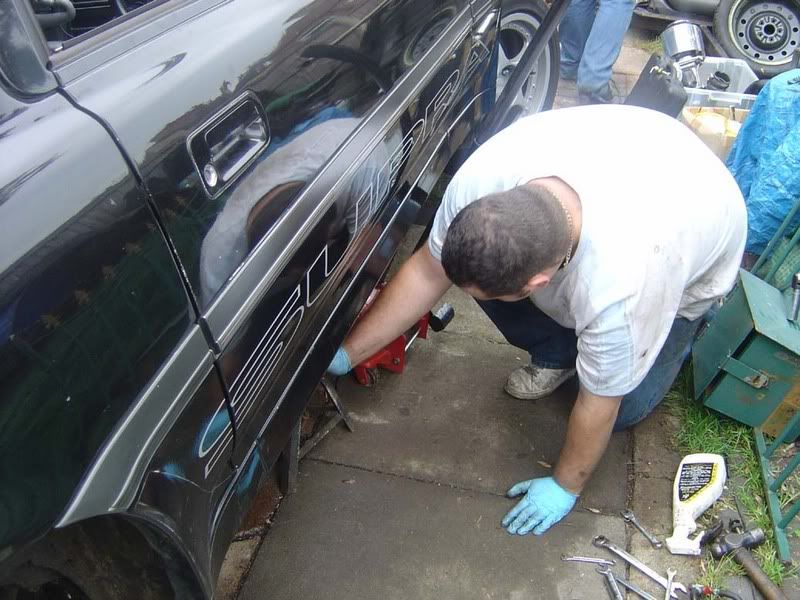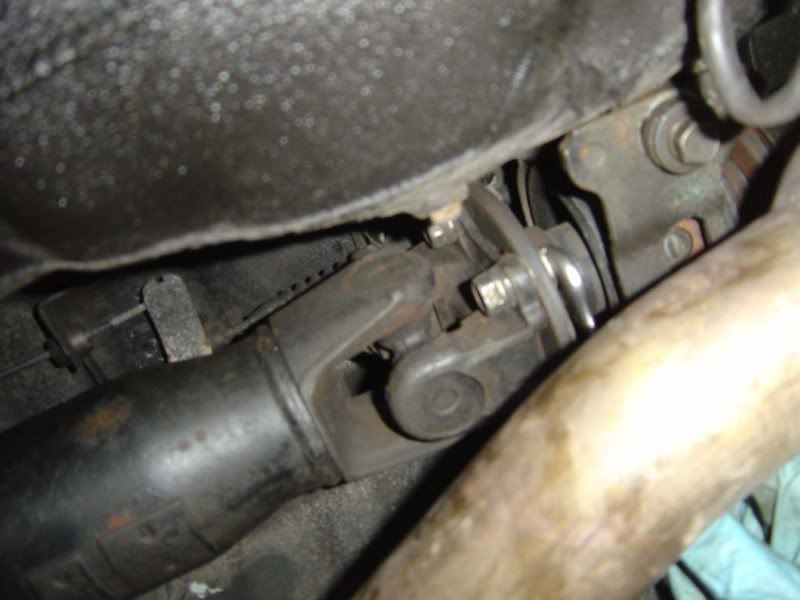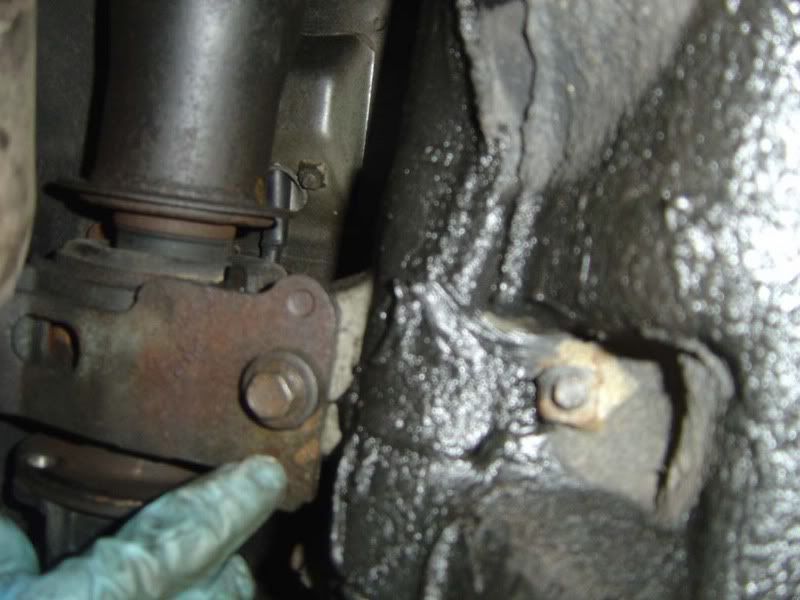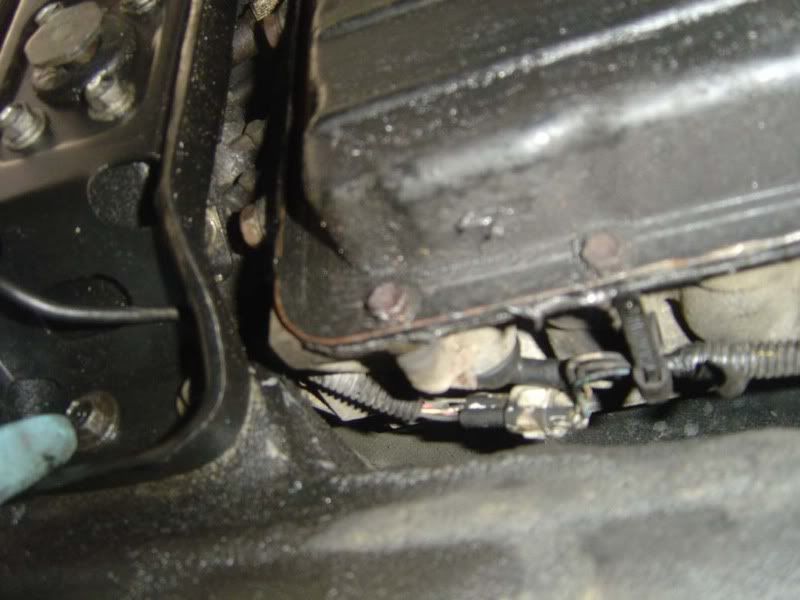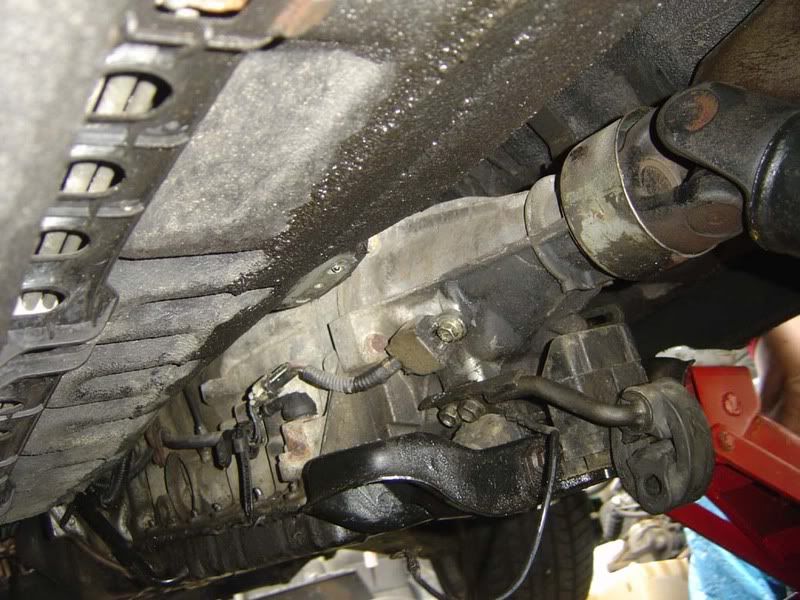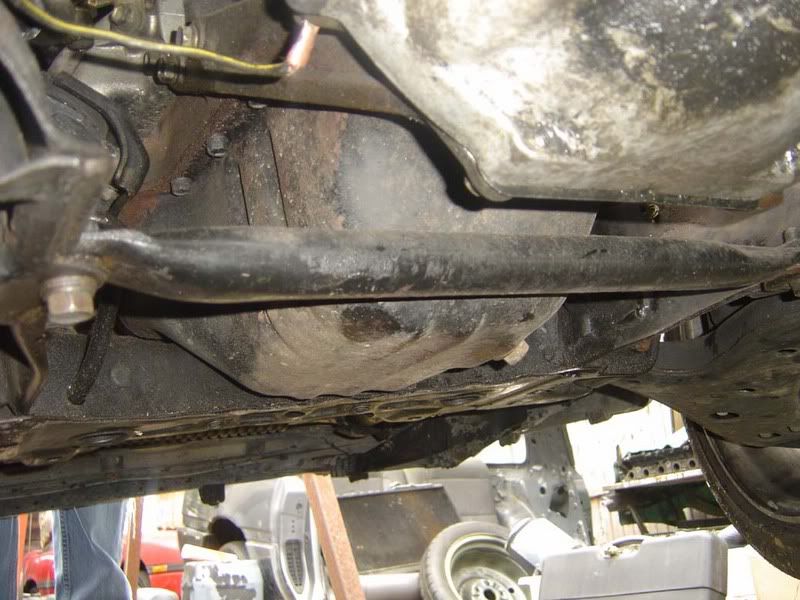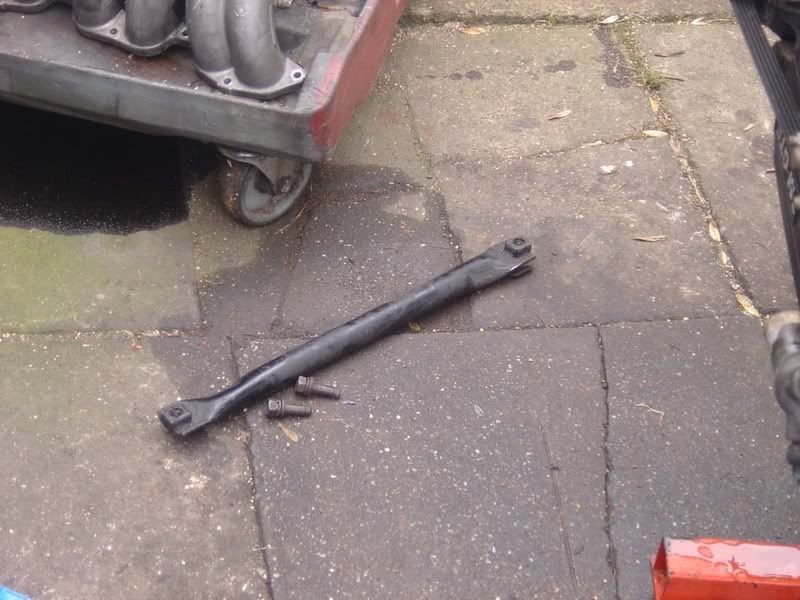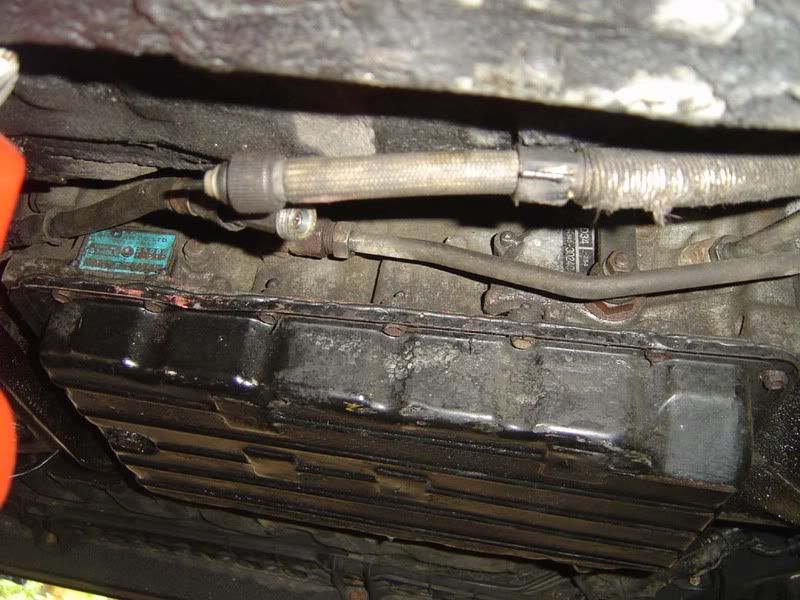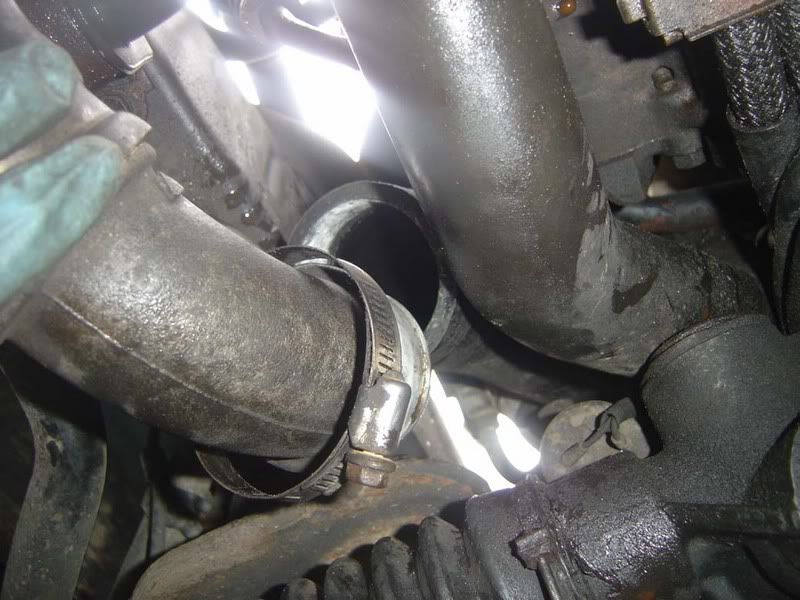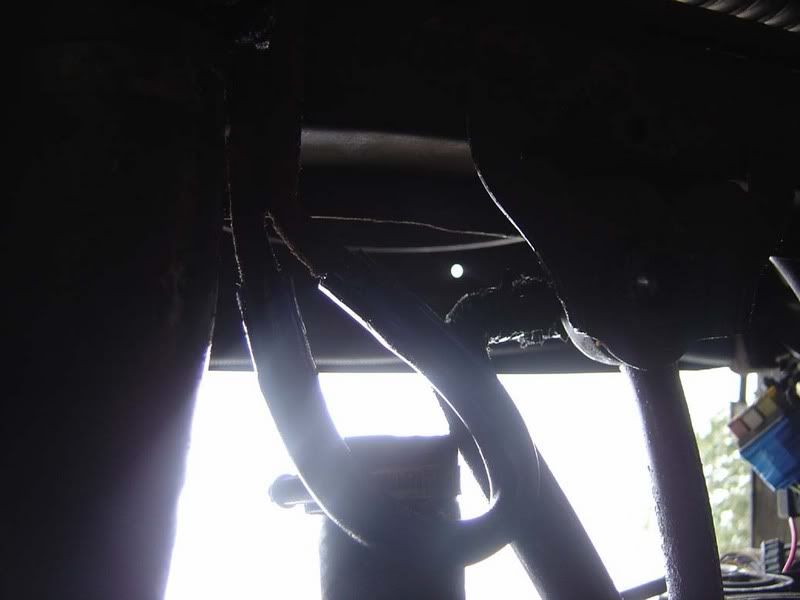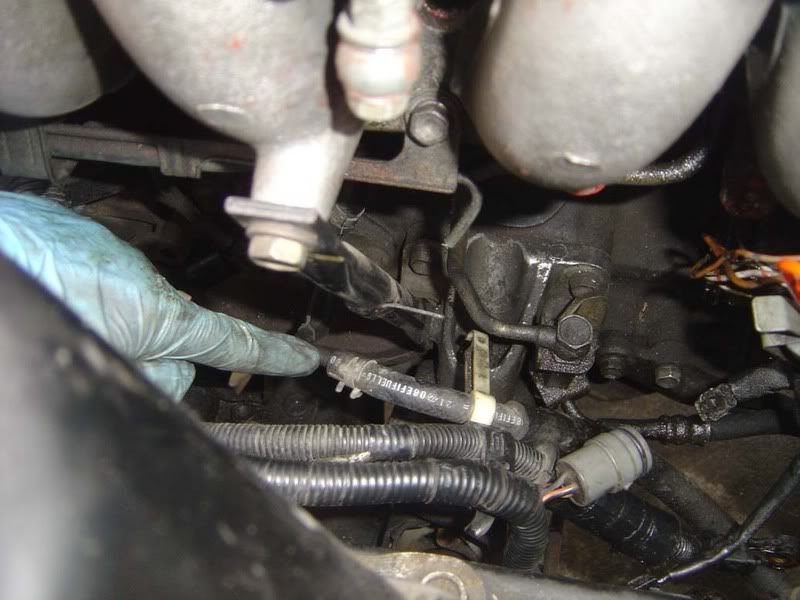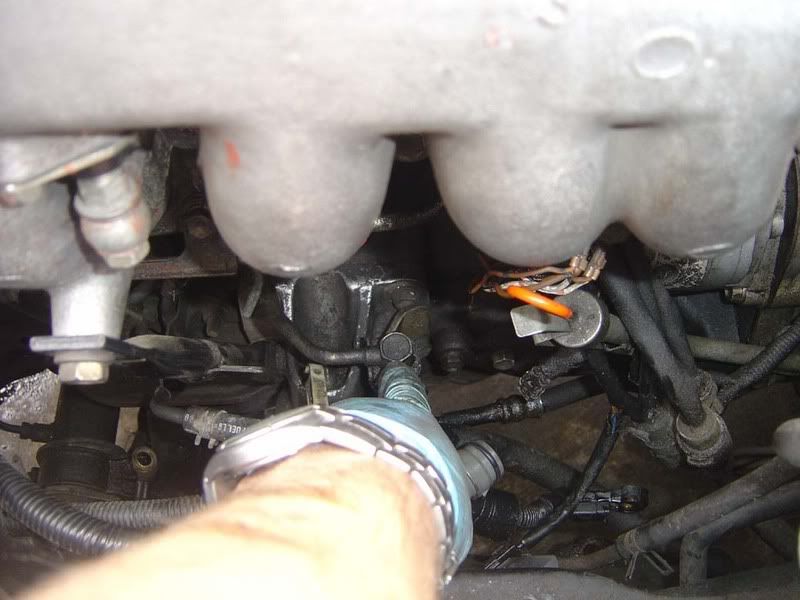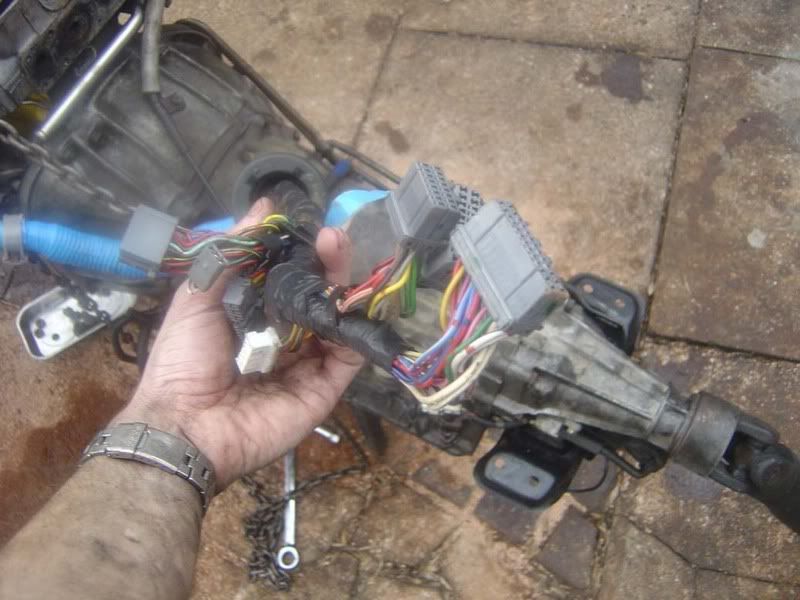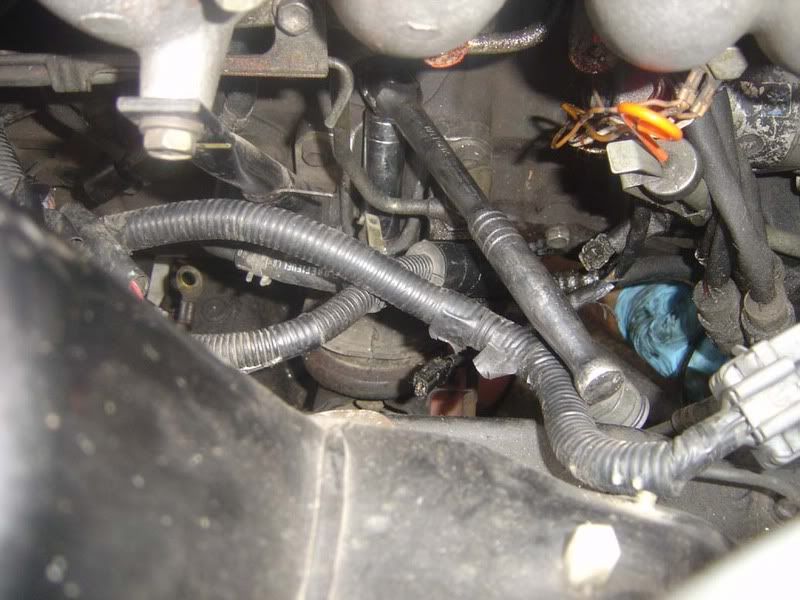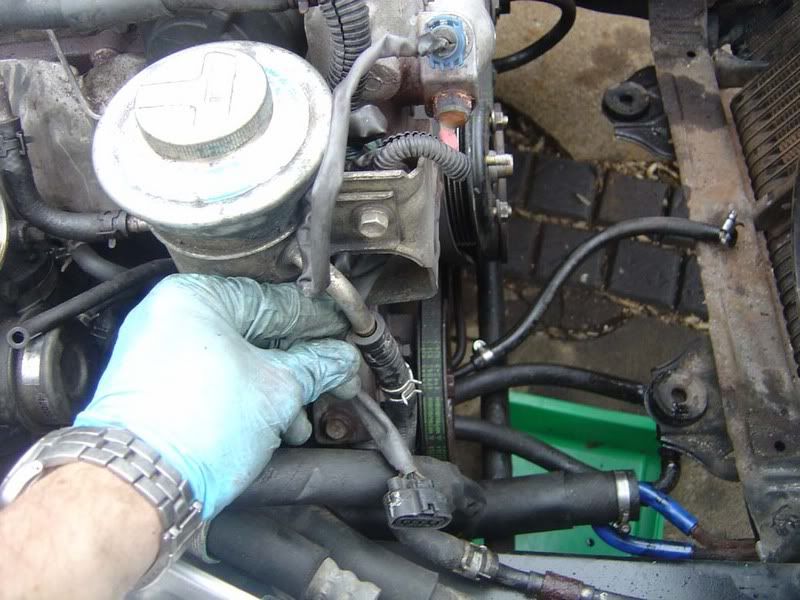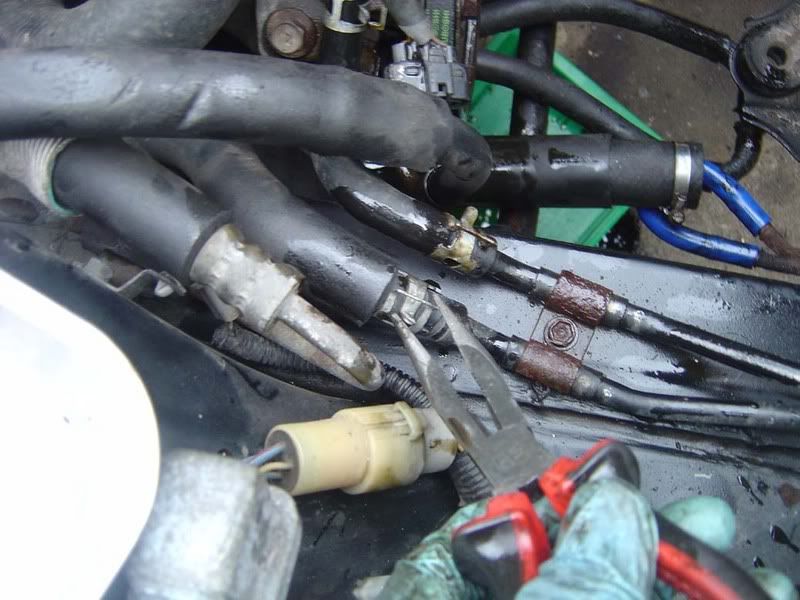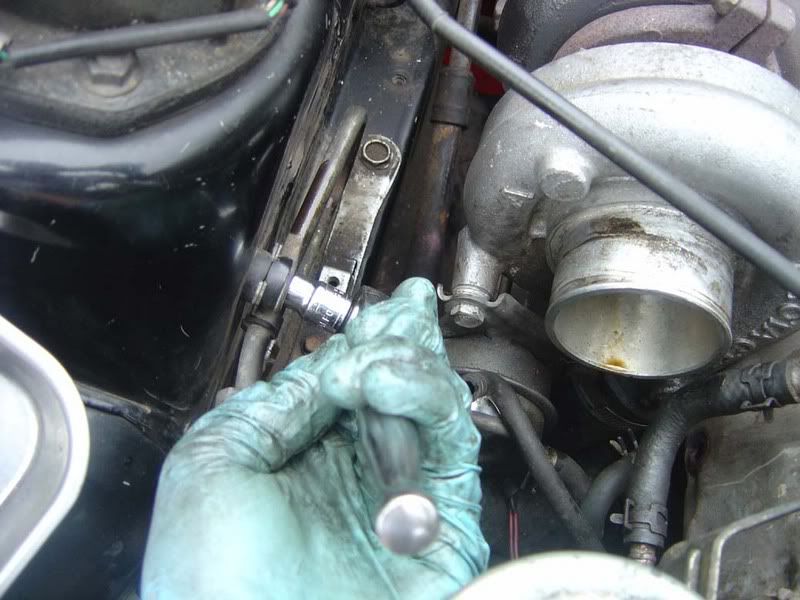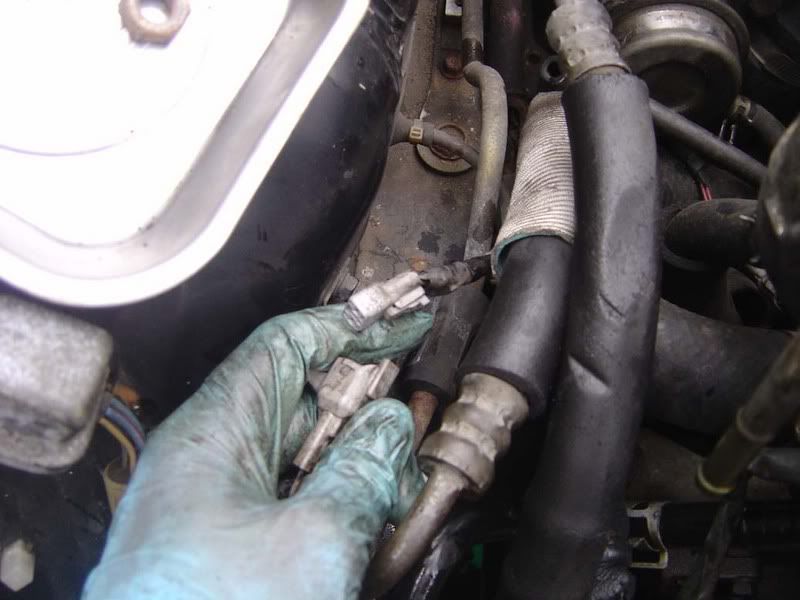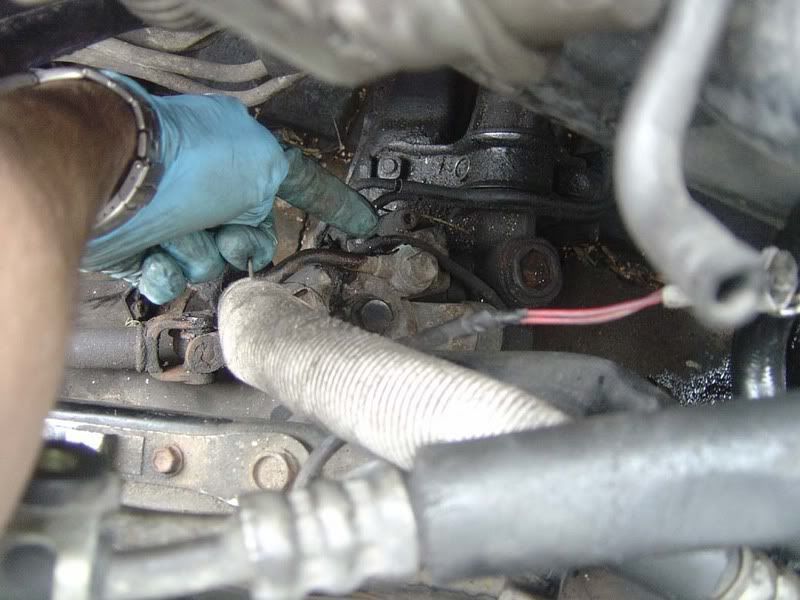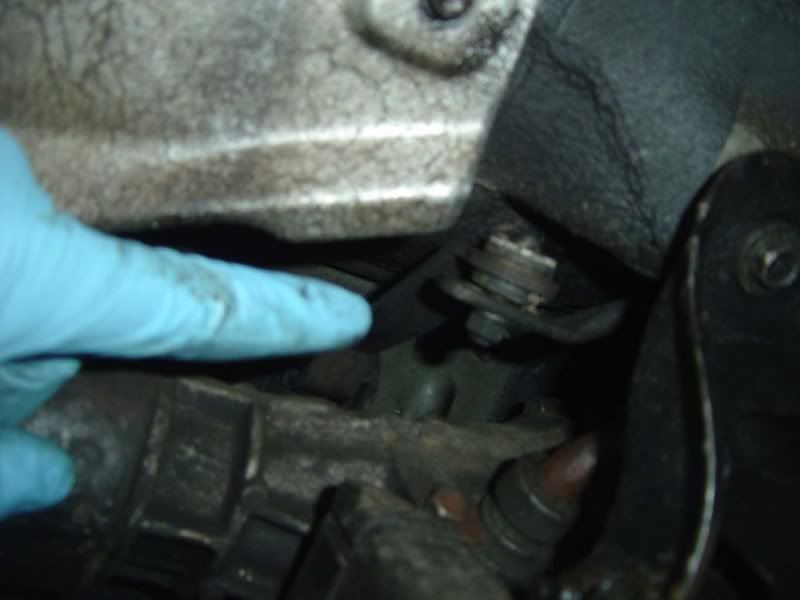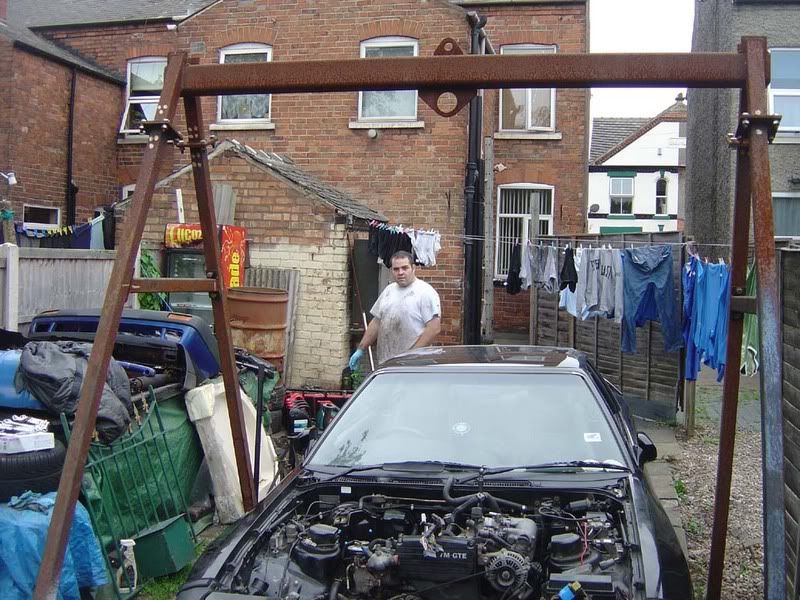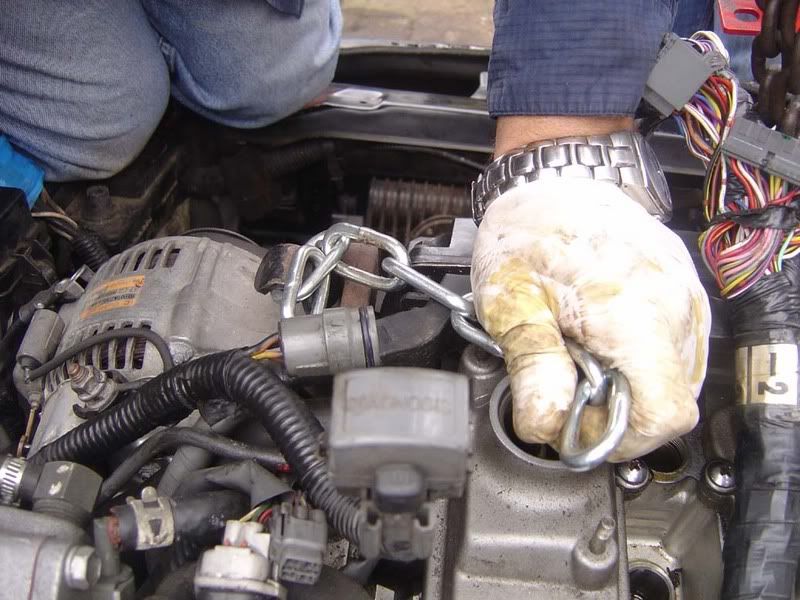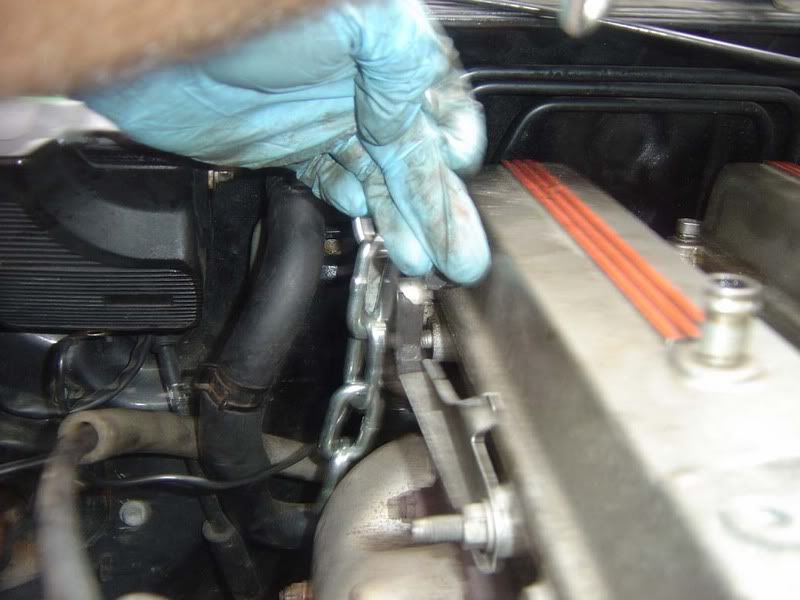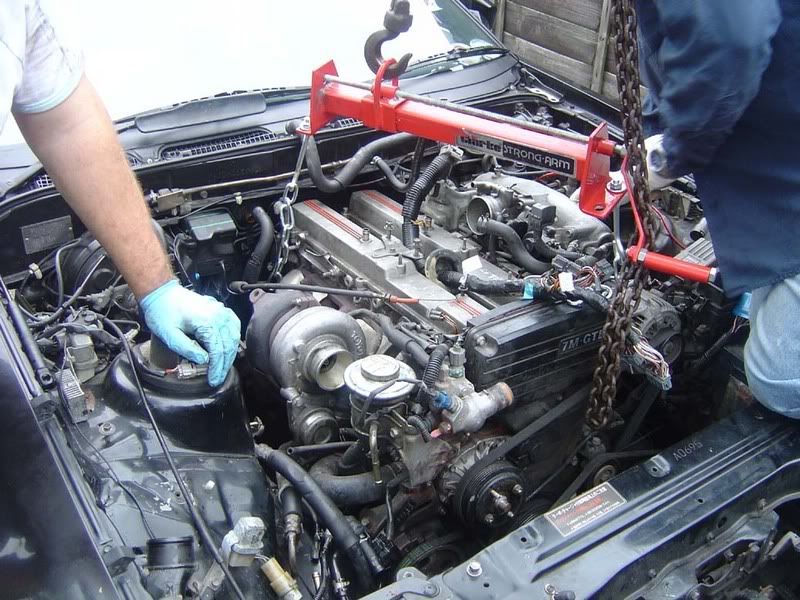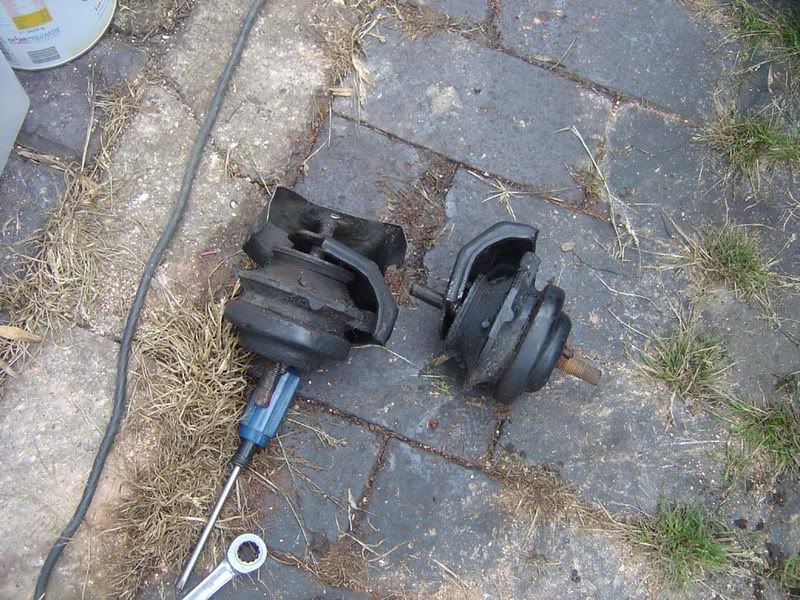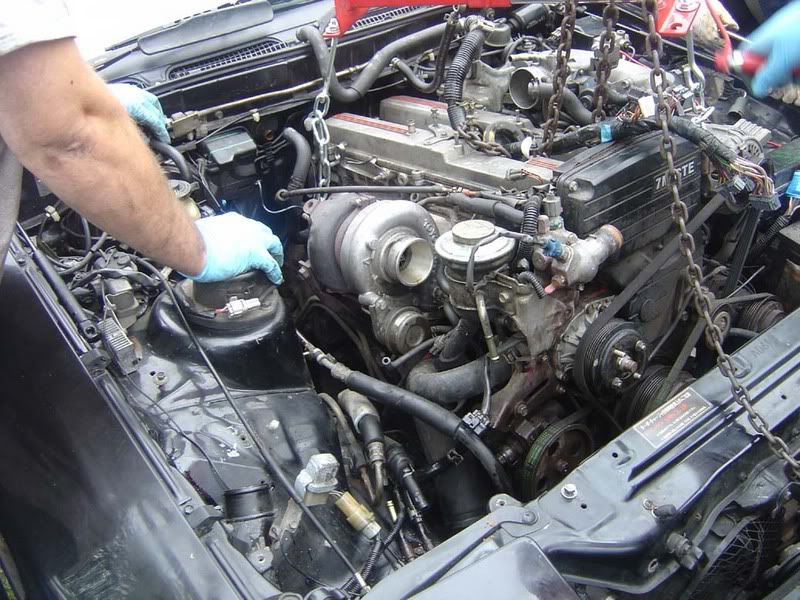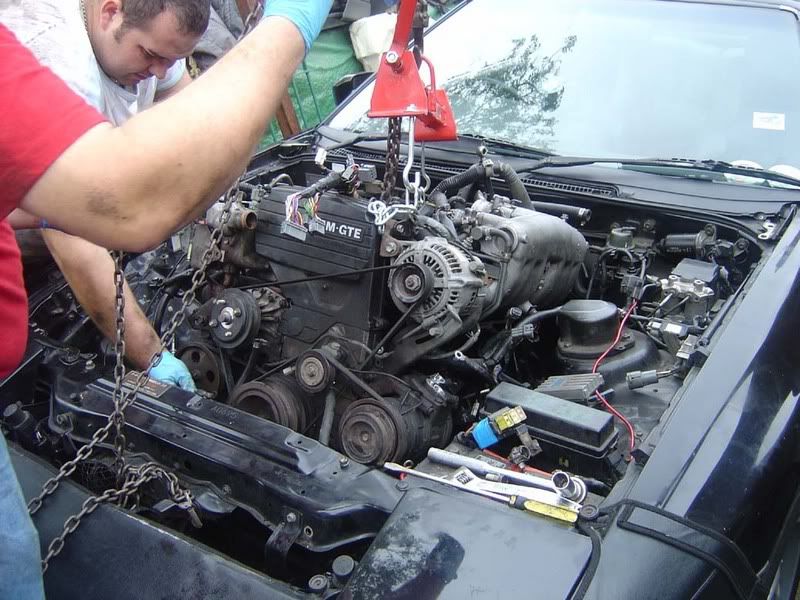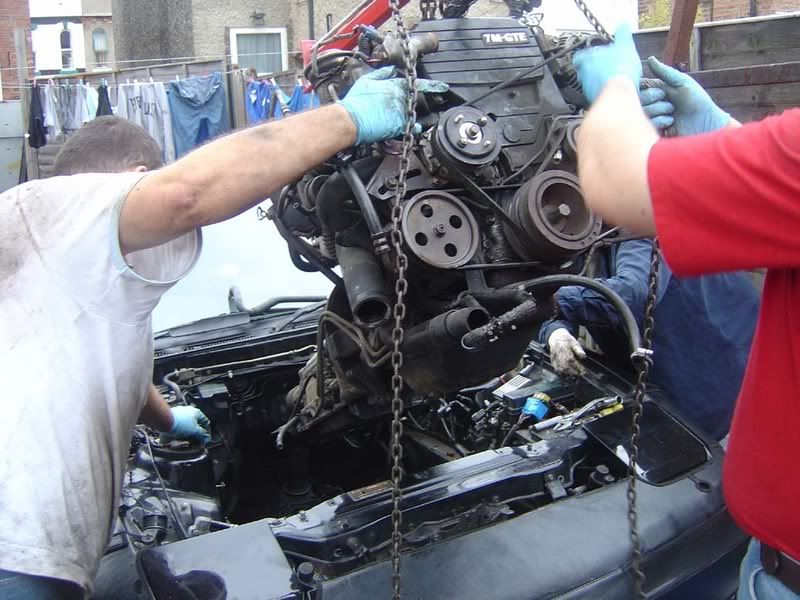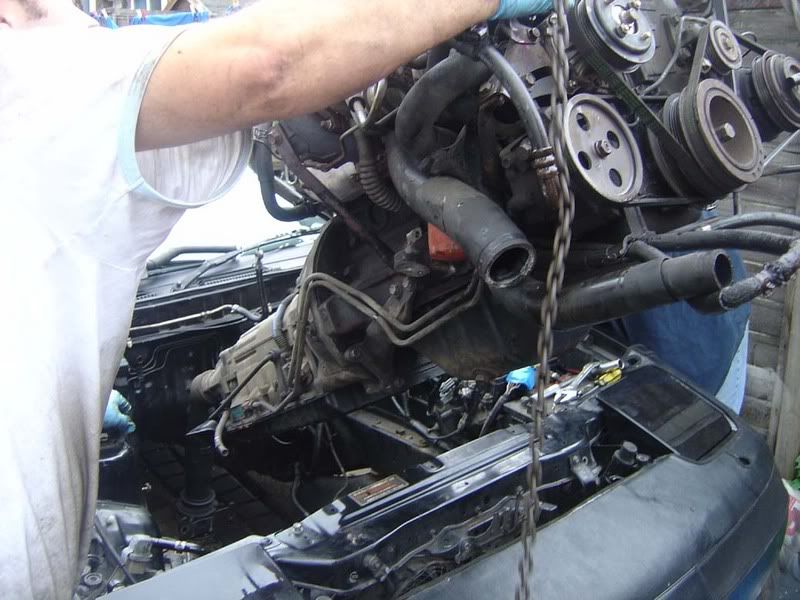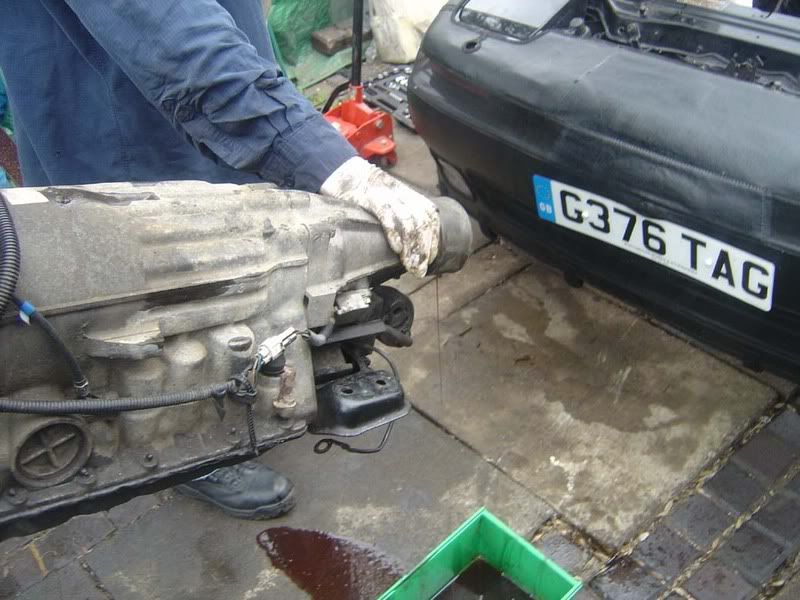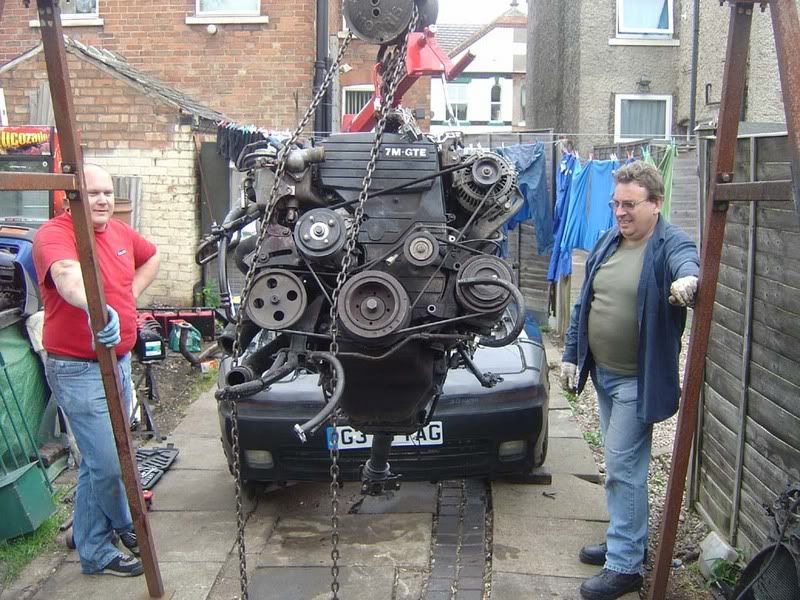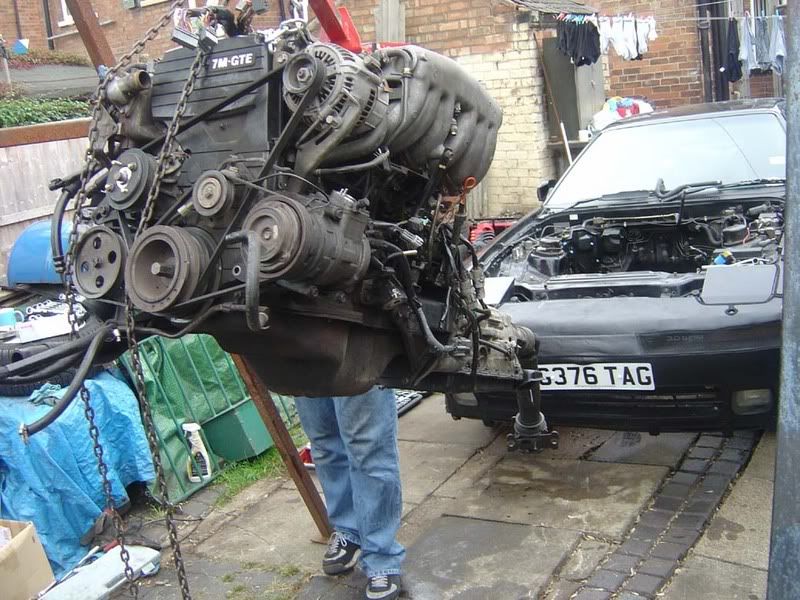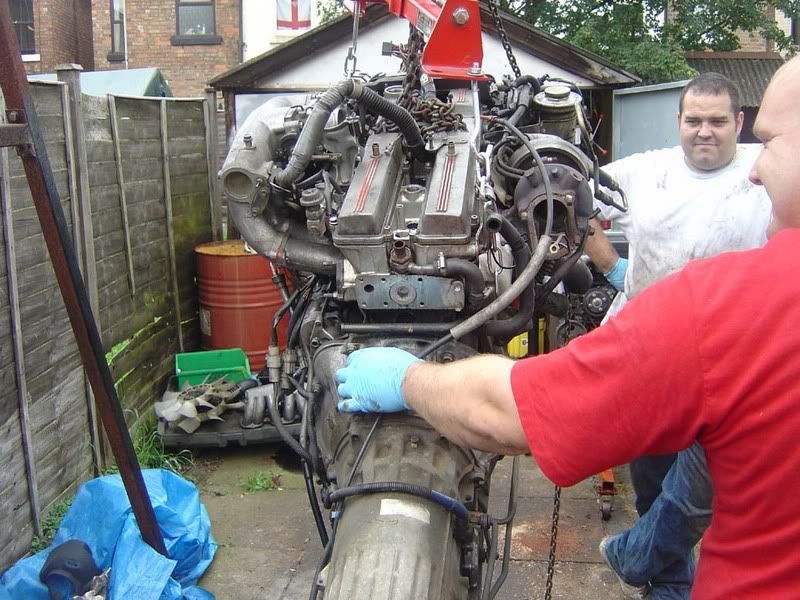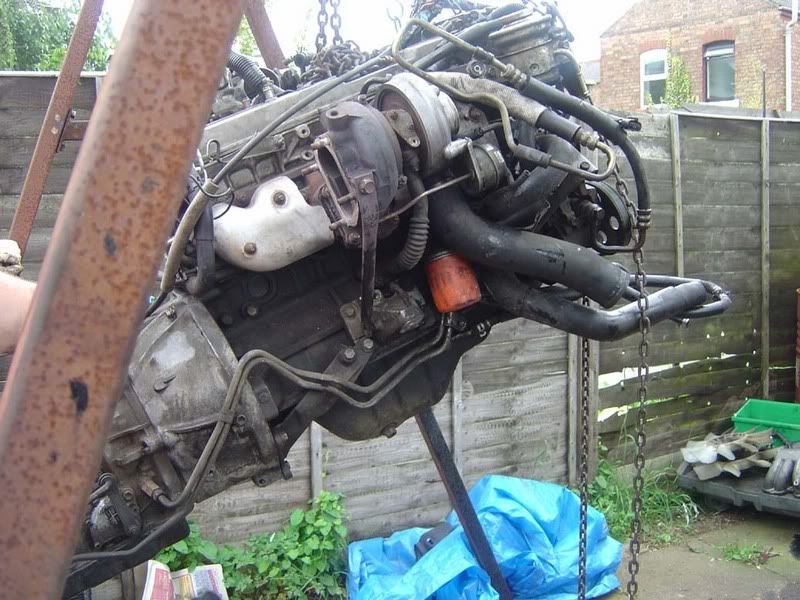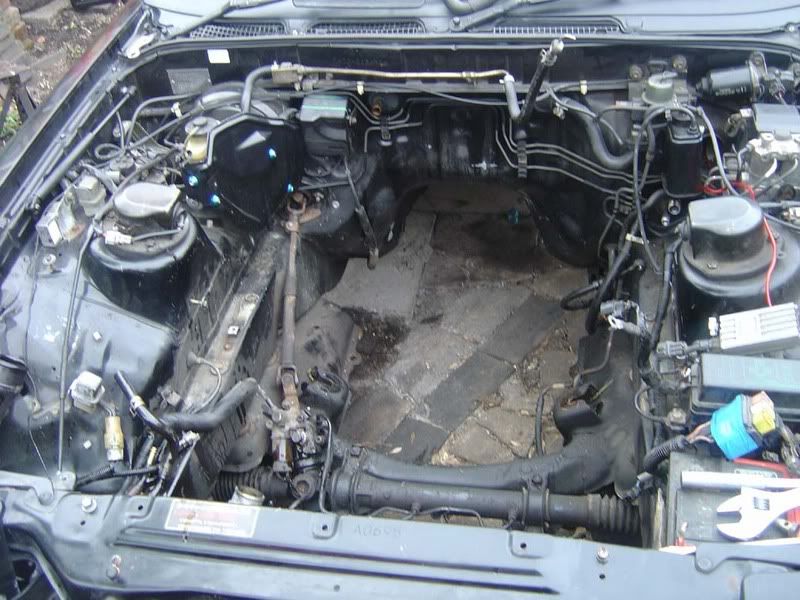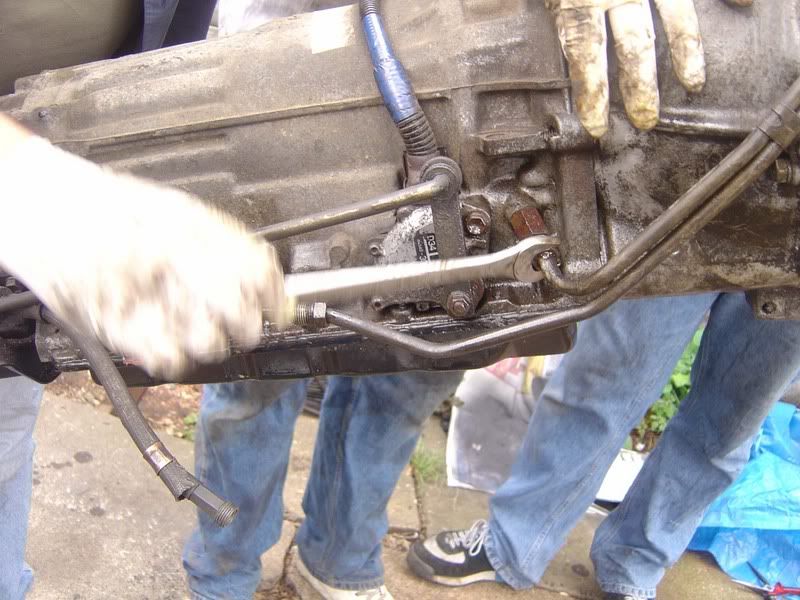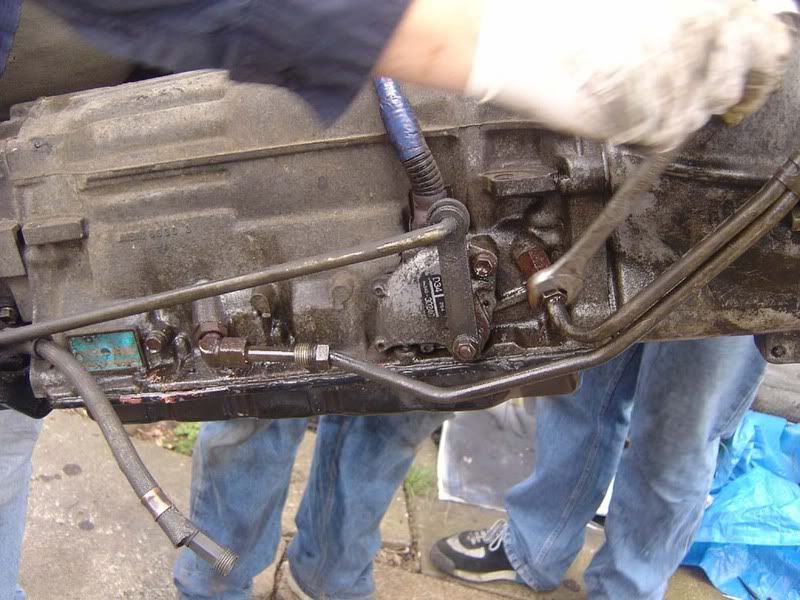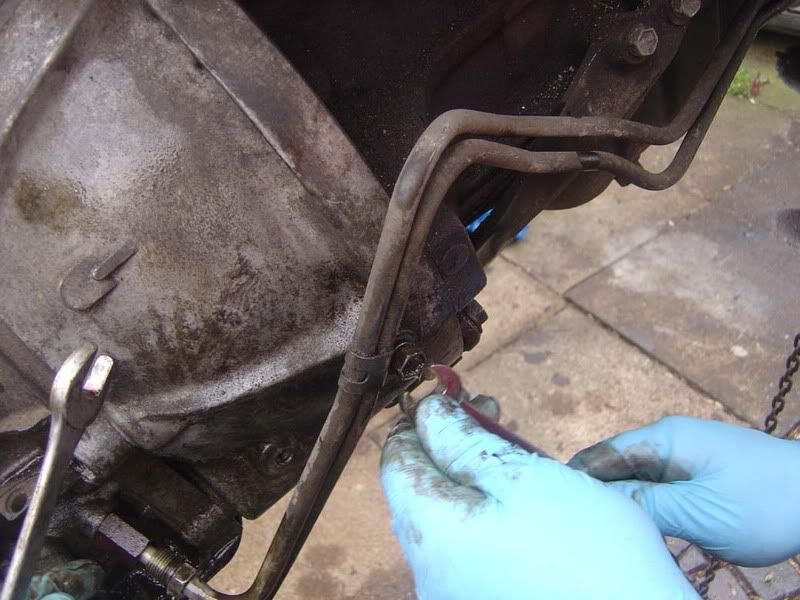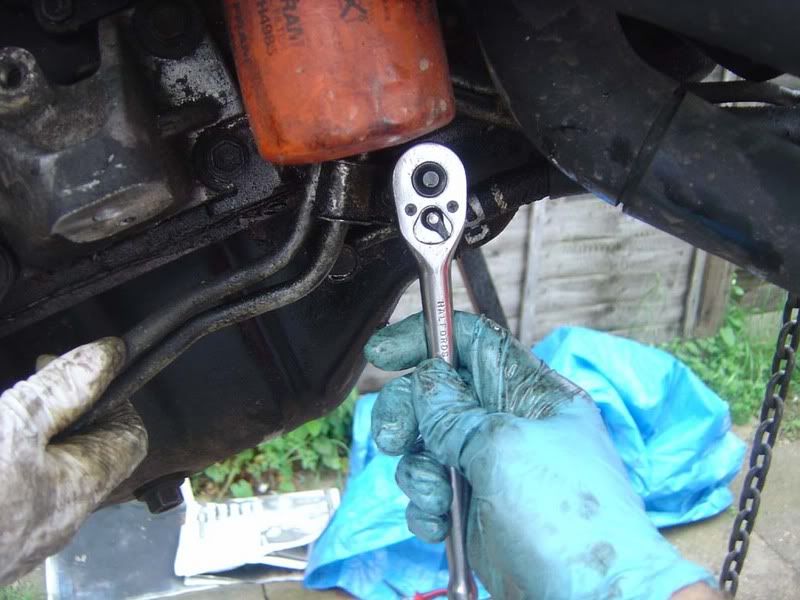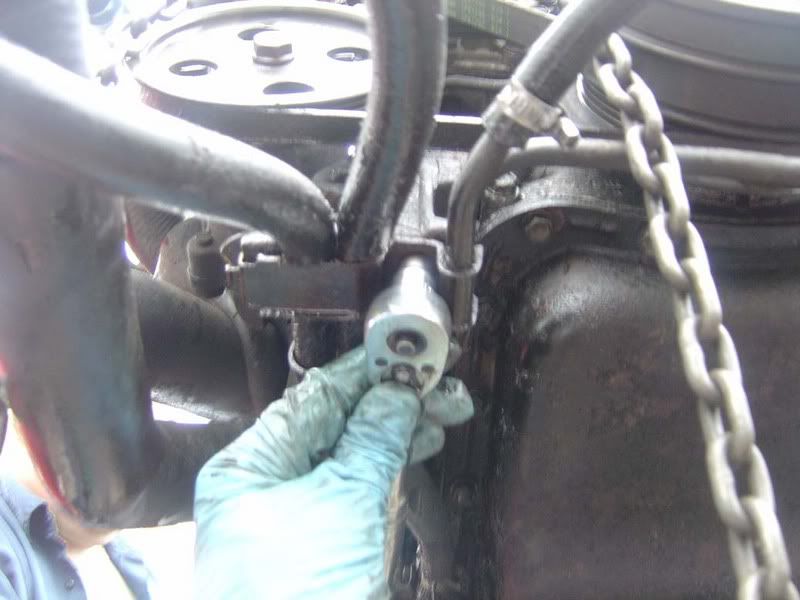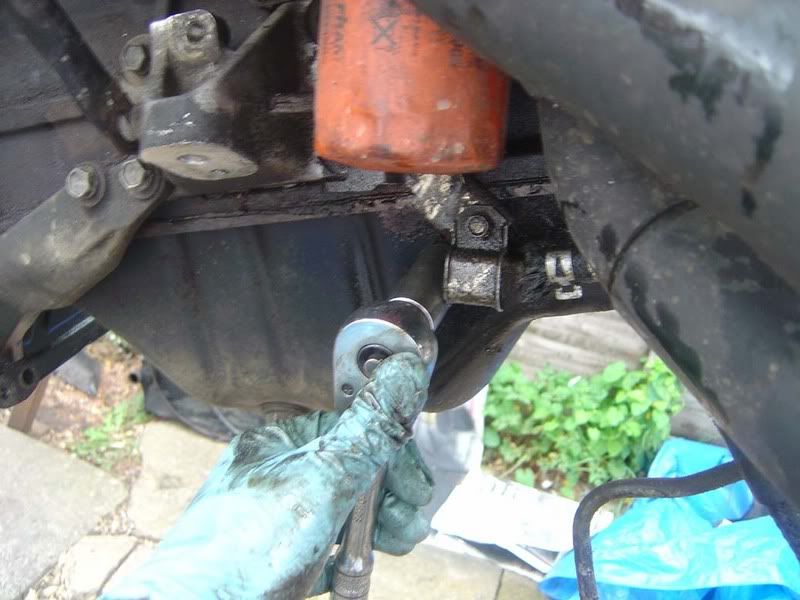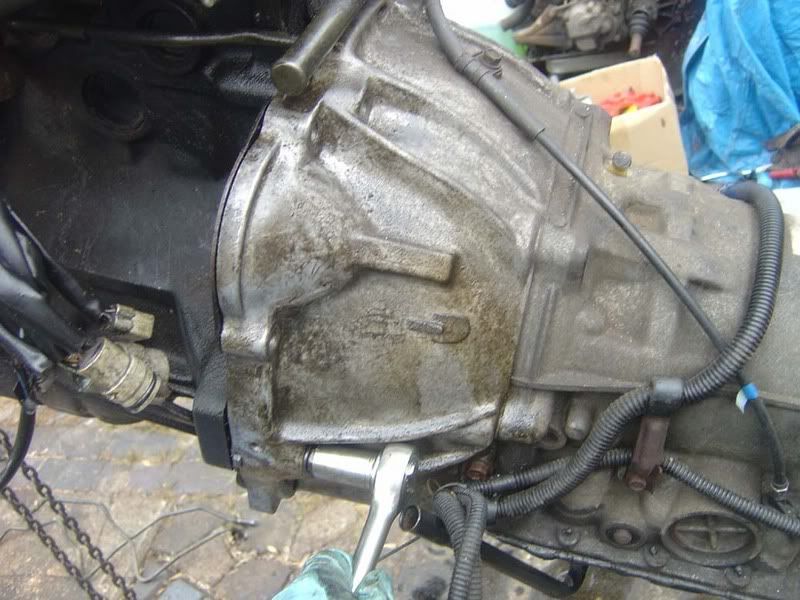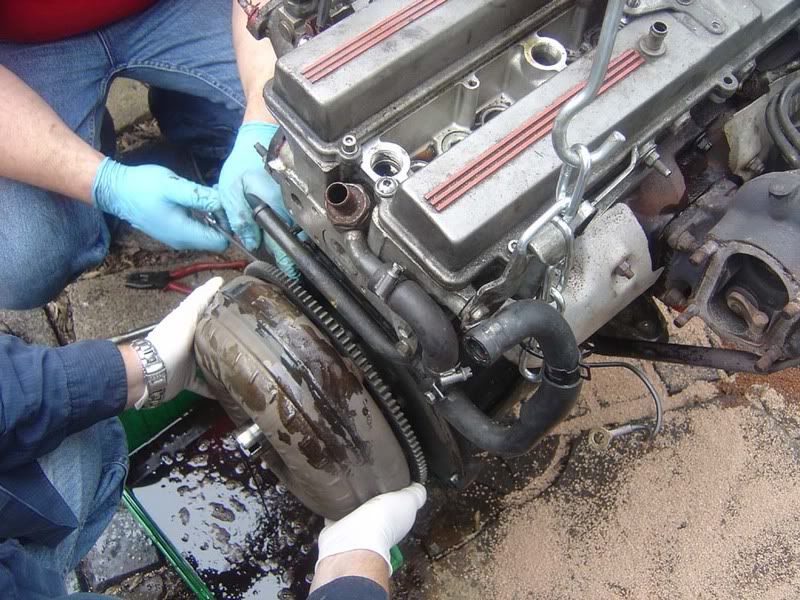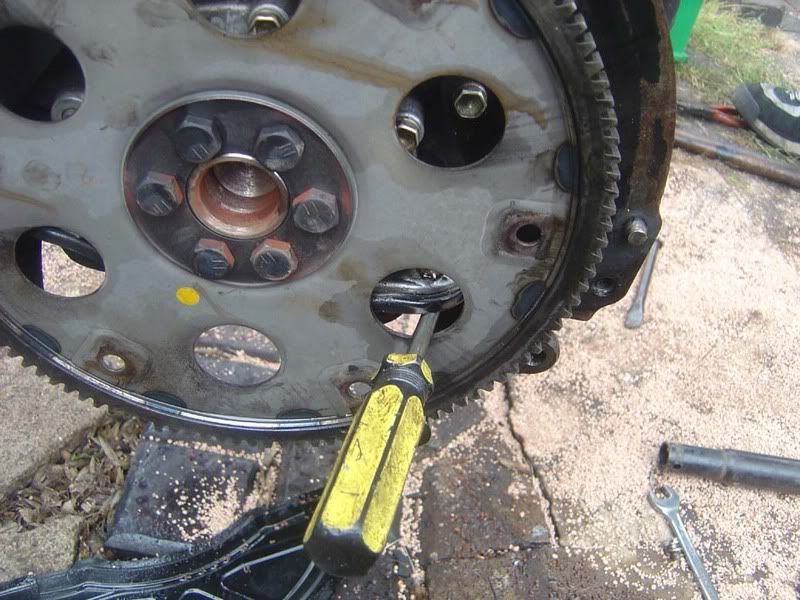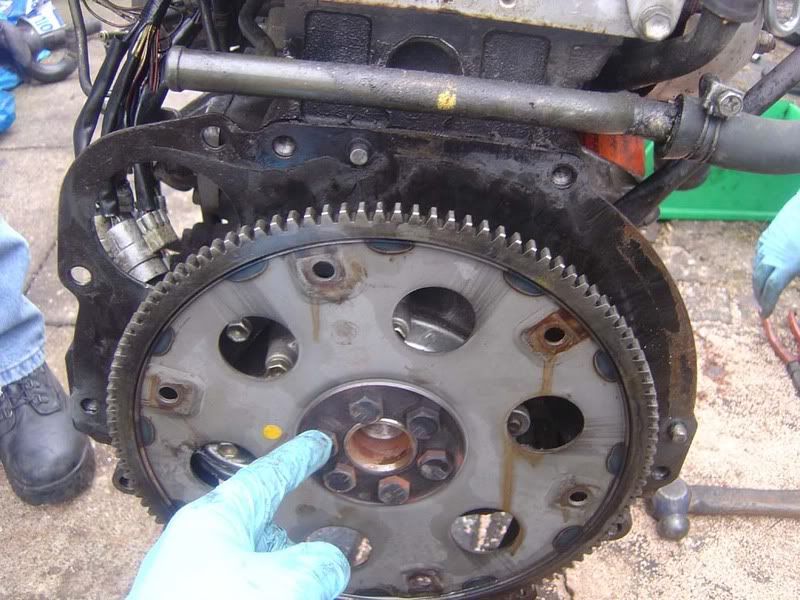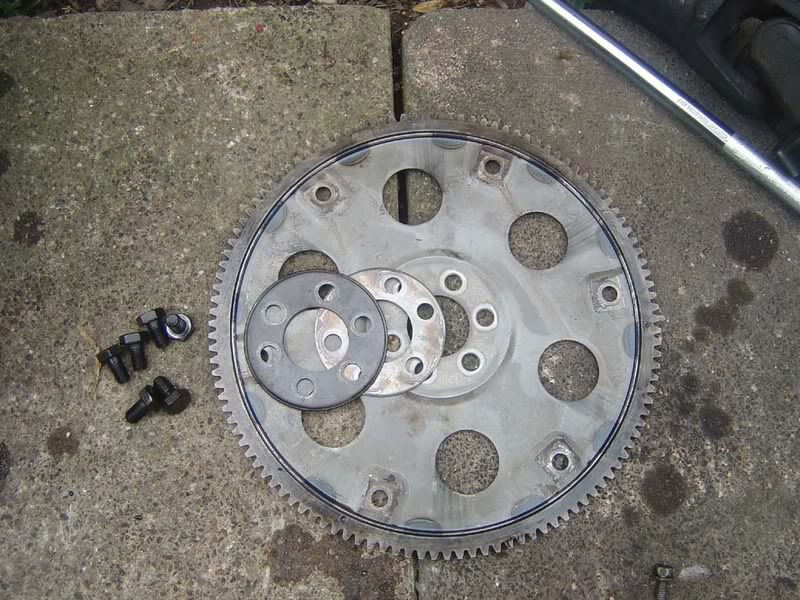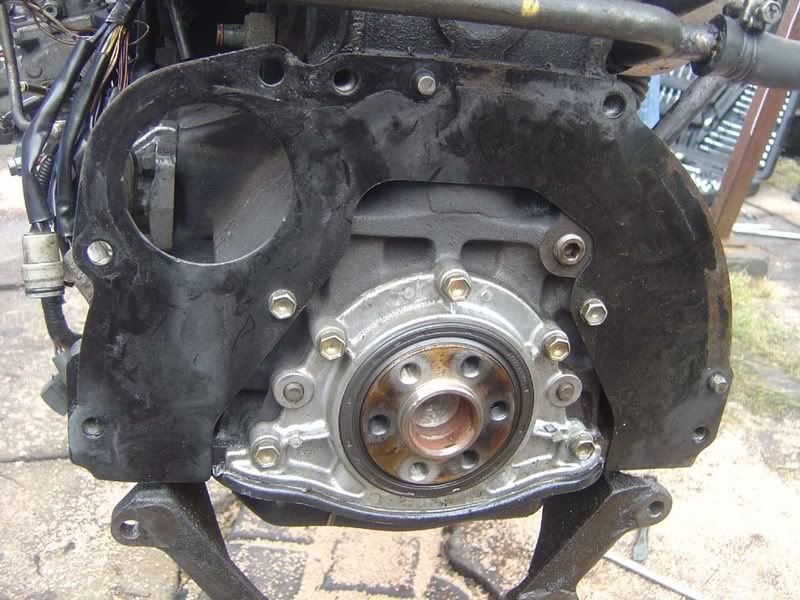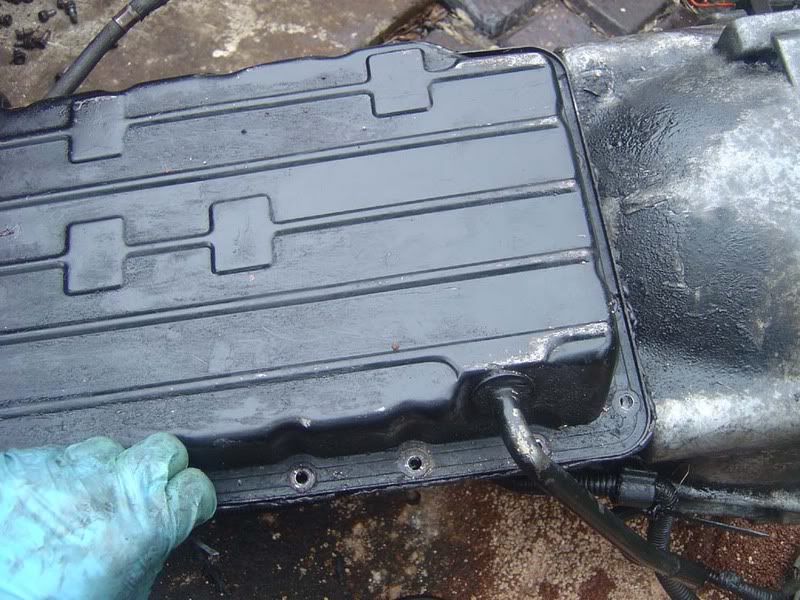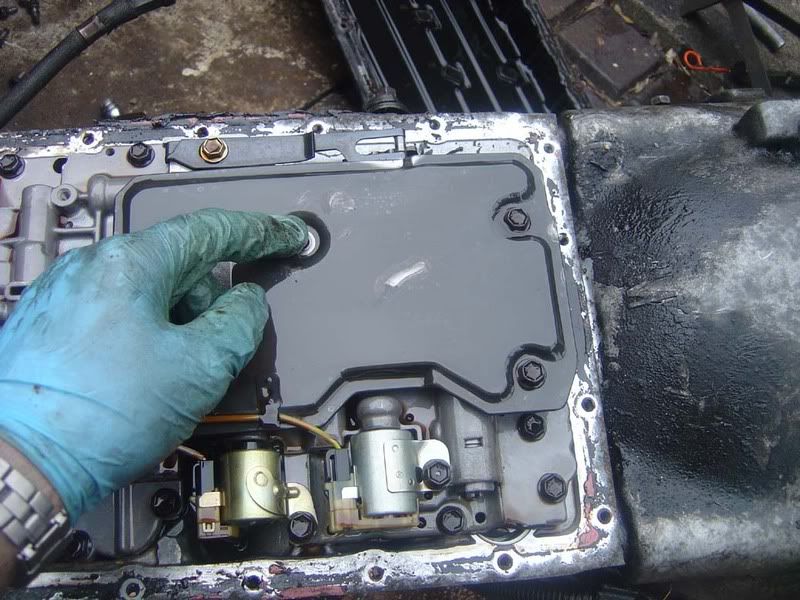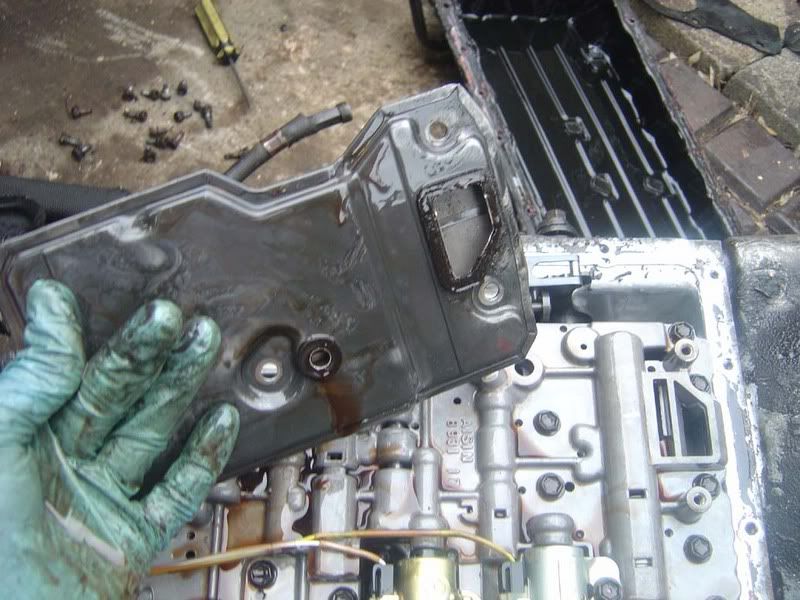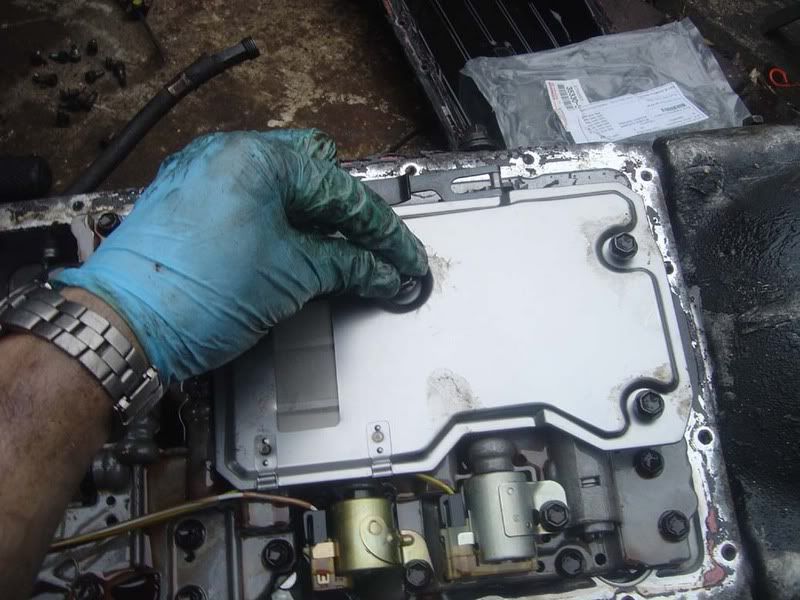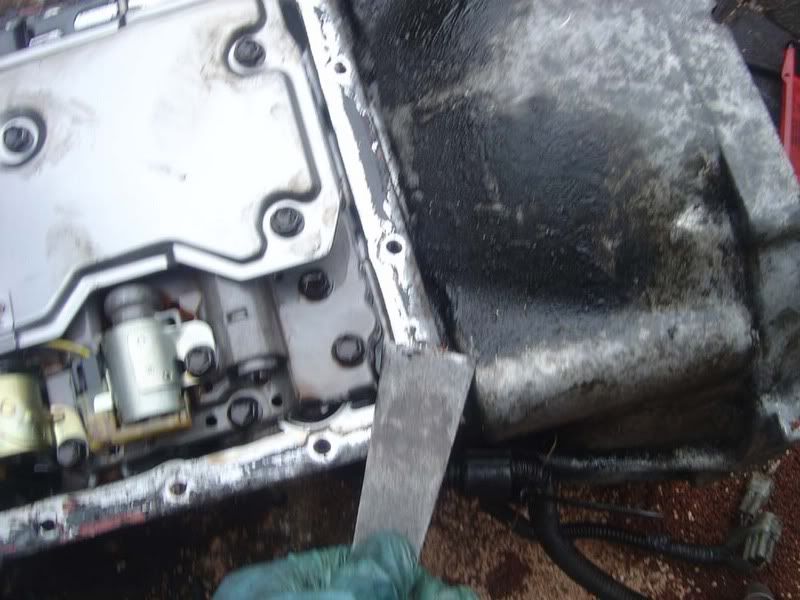I'm afraid this guide wasn't quite as methodical as the normal ones but hopefully it covers most of everything you need. If anyone has anything to add please let me know
When removing (and especially refitting) an engine, it's always worth having as many people as you can on hand. At least four is ideal if you can and don't even try it without a hoist. A load leveller is well worth having so you can angle the engine to manoeuvre the engine in/out.
It's harder to get in than take out but take your time and it's not a technically difficult job.
It's always worth pulling the transmission with the engine, it makes the engine go in/out more easily because it naturally slopes in at the right angel. It's also a real pain to try and bolt up the engine to the transmission in situ.
Step 1 - Assuming you want to remove the crank pulley once the engine is out you'll need to remove the bolt holding it on at a very early stage. This is because the bolt is so tight that you will find it incredibly difficult to do when the engine is not locked. You can either try putting the car in gear with your foot on the brakes (manual cars), or locking the engine then using a breaker bar or do it the easy way :
fit a 19mm socket and breaker bar to the pulley bolt and then crank the engine. Make sure you have disabled the engine in some way (removed the fuel pump fuse or spark plugs) so it doesn't actually fire up but the act of the starter turning the engine will shift the bolt easily.
Note in the picture we had already removed the rad and fans but this is not required
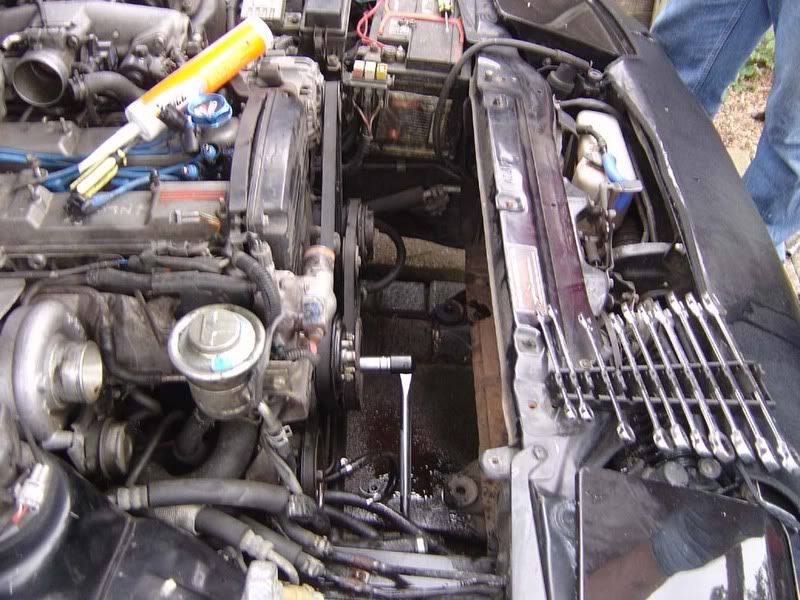
Step 2 - Remove the two gas struts from the bonnet (ease out the c-clip with a flatblade screwdriver and then they simply pull off) and then the 4 bolts holding the bonnet to its brackets. Be careful when you undo the bolts for the bracket, make sure the bonnet doesn't slip and damage the corners.
Don't forget to remove the washer jet rubber pipes before removing the bonnet. Two people make the job much easier.
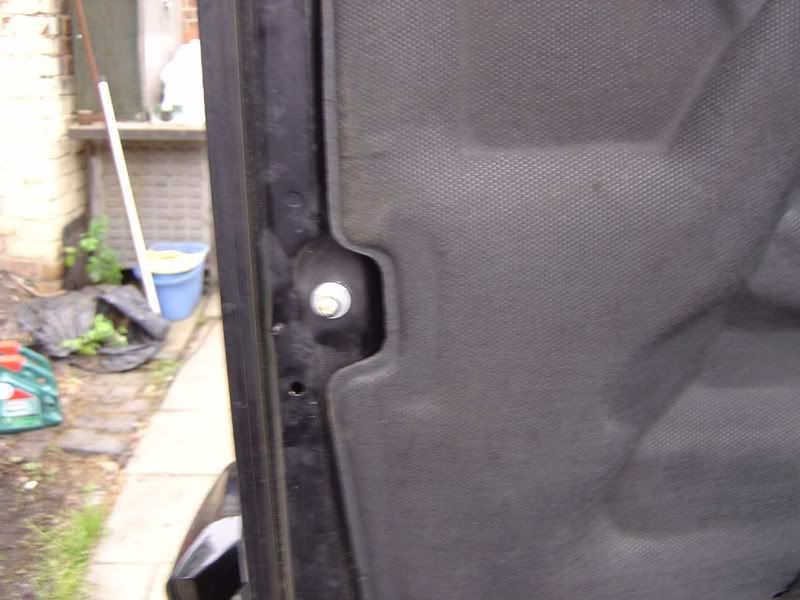
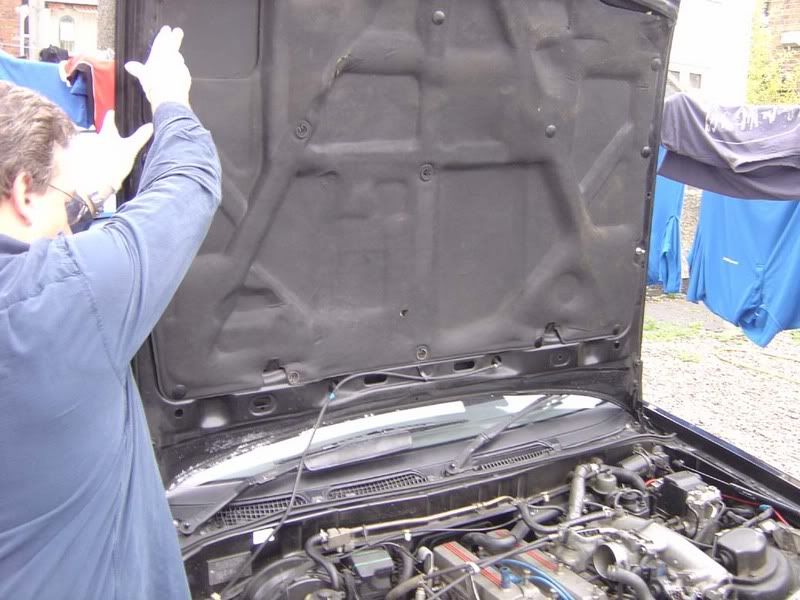
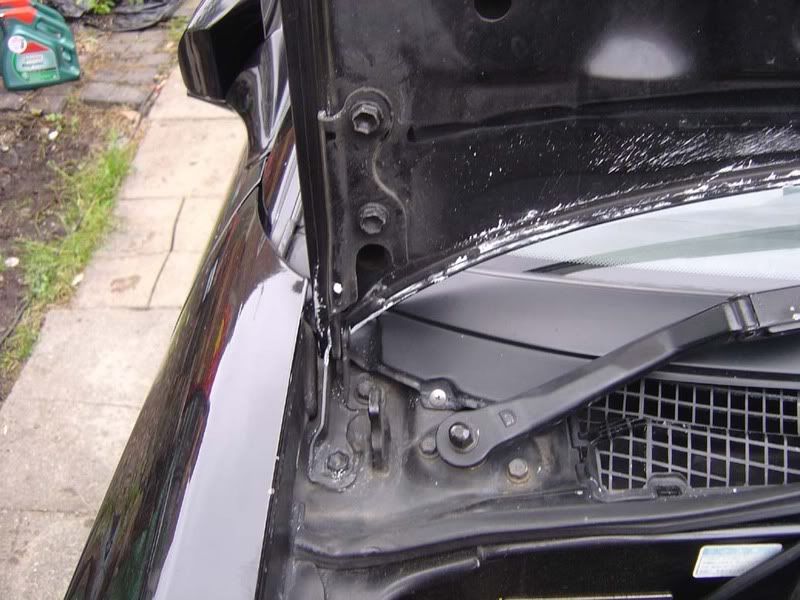
When removing (and especially refitting) an engine, it's always worth having as many people as you can on hand. At least four is ideal if you can and don't even try it without a hoist. A load leveller is well worth having so you can angle the engine to manoeuvre the engine in/out.
It's harder to get in than take out but take your time and it's not a technically difficult job.
It's always worth pulling the transmission with the engine, it makes the engine go in/out more easily because it naturally slopes in at the right angel. It's also a real pain to try and bolt up the engine to the transmission in situ.
Step 1 - Assuming you want to remove the crank pulley once the engine is out you'll need to remove the bolt holding it on at a very early stage. This is because the bolt is so tight that you will find it incredibly difficult to do when the engine is not locked. You can either try putting the car in gear with your foot on the brakes (manual cars), or locking the engine then using a breaker bar or do it the easy way :
fit a 19mm socket and breaker bar to the pulley bolt and then crank the engine. Make sure you have disabled the engine in some way (removed the fuel pump fuse or spark plugs) so it doesn't actually fire up but the act of the starter turning the engine will shift the bolt easily.
Note in the picture we had already removed the rad and fans but this is not required

Step 2 - Remove the two gas struts from the bonnet (ease out the c-clip with a flatblade screwdriver and then they simply pull off) and then the 4 bolts holding the bonnet to its brackets. Be careful when you undo the bolts for the bracket, make sure the bonnet doesn't slip and damage the corners.
Don't forget to remove the washer jet rubber pipes before removing the bonnet. Two people make the job much easier.




